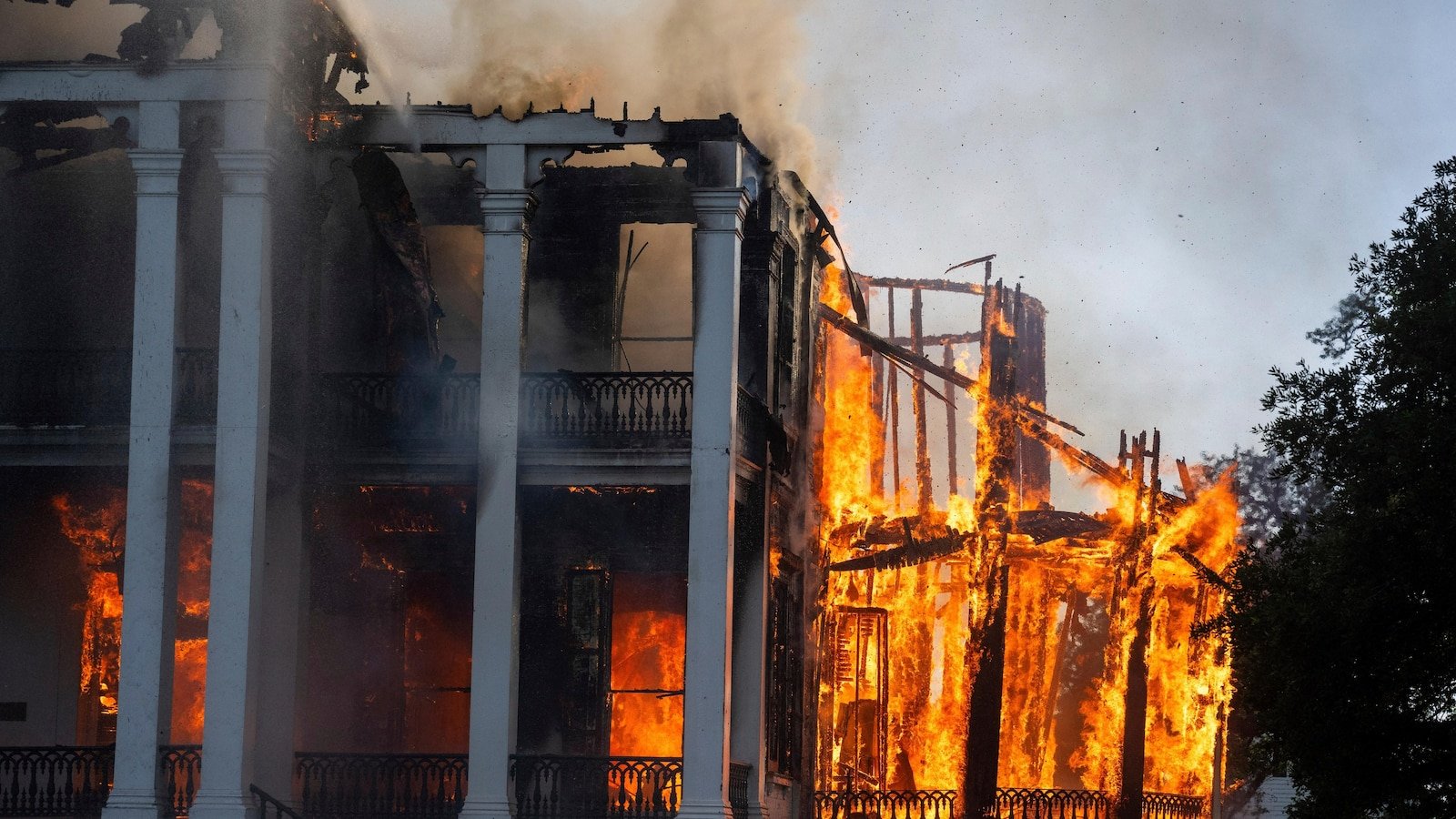White Castle, the. – The flames crossed a massive mansion in Louisiana, destroying much of the historical structure that was used as a planting house when completed in 1859, authorities said.
The fire that wrapped the House of Plantations of Nottoway on Thursday devastated the building along the Mississippi river between Baton Rouge and New Orleans, said the president of the Parish of Iberville, Chris Daigle, on social networks. Almost a dozen fire departments from surrounding cities fought against the fire, he said. No injuries were reported.
Before the fire, it was a resort place and events, and its website described it as “the largest antebellum mansion in the remaining south.” Daigle called it “an cornerstone of our tourist economy and a site of national importance.”
The 53,000 square feet house (4,924 square meters) in an old sugar plantation about 65 miles (105 kilometers) northwest of New Orleans had a three -story roundabout adorned with white giant white columns and Italian land chimneys by hand, according to a description on its website.
The owner of the mansion, Louisiana’s lawyer, Dan Dyess, said in a written statement that the fire had led to a “total loss” after all the time and the money he invested in the building.
“We are devastated and disconsolate by this loss,” he said. “This was my dream that has now faded.”
The photos of the local media showed a giant orange wall that consumed the upper round and sent a thick smoke plume to heaven.
The fire has been contained, and no other properties were damaged, said Major Money Micecion of the Sheriff’s Office of the Iberville parish. The authorities were investigating the cause of the fire, he added.
In a statement on Facebook, Daigle touched the history of racial injustice of the structure during a time when enslaved blacks helped build the home and operate the sugar plantation that surrounded it. In 1860, 155 enslaved people were retained in the property, according to the records of the National Parks Service.
“While its early history is undeniably linked to an era of great injustice, in recent decades it evolved to a place of reflection, education and dialogue,” said Daigle.
“Since the 1980s, he has received visitors from all over the world who appreciated their architecture and face the legacies of their time,” he added. “It remained a warning monument and a testimony of the importance of preserving history, including painful parts, so that future generations can learn and grow from it.”





